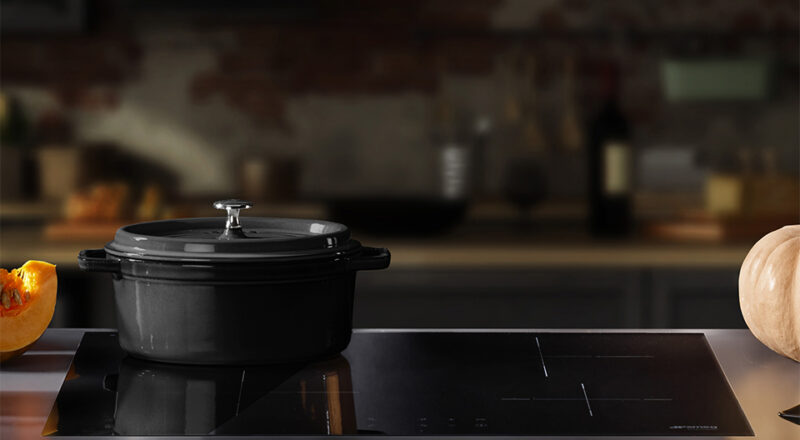Cooking with cast iron on an induction cooktop combines the best of both worlds: the even heating of induction and the durability of cast iron. However, lifting cast iron safely off an induction cooktop is crucial to prevent damage to the cooktop or injury to yourself. In this guide, we’ll explore the methods to ensure safety and effectiveness when handling cast iron cookware.

Why Lifting Cast Iron Safely is Important
Understanding the importance of lifting cast iron safely is paramount. Cast iron, known for its weight and sturdiness, can be challenging to maneuver. Improper lifting can lead to scratched surfaces and even broken cooktops. Moreover, ensuring you lift safely can prevent injuries like burns or strains.
Understanding Induction Cooktops
Induction cooktops utilize electromagnetic fields to heat pots and pans directly, meaning the cooktop itself doesn’t get hot. This offers many advantages, including safety and energy efficiency. However, these cooktops require specific handling to maintain their delicate glass surfaces.
Benefits of Induction Cooking
Induction cooking is praised for its speed and energy efficiency. It heats up cookware quickly, providing precise temperature control. This method is also safer, as the cooktop surface remains relatively cool, reducing the risk of burns.
Challenges with Cast Iron
Despite its benefits, using cast iron on induction cooktops presents challenges. The weight and rough surface of cast iron can scratch or damage the cooktop if not handled properly. Understanding these challenges is essential for safe cooking.
Preparing to Lift Cast Iron
Before lifting cast iron off an induction cooktop, preparation is key. Ensure the pan is cool enough to handle, and consider using heat-resistant gloves or pot holders for additional safety.
Using Proper Tools
Investing in quality pot holders or heat-resistant gloves can make lifting cast iron easier and safer. These tools provide a better grip and protect your hands from heat.
Steps to Safely Lift Cast Iron
Follow these steps to safely lift cast iron off an induction cooktop:
Step 1: Cool Down the Cookware
Allow the cast iron to cool slightly before attempting to lift it. This reduces the risk of burns and makes handling easier.
Step 2: Use Both Hands
Due to its weight, always use both hands when lifting cast iron. This ensures a stable grip and reduces the risk of dropping the cookware.
Step 3: Lift Straight Up
Lifting the cast iron straight up prevents dragging, which can scratch the cooktop surface. Use a firm, steady motion to lift the pan.
Maintaining Your Induction Cooktop
To extend the life of your induction cooktop, regular maintenance is crucial. Clean the surface after each use and inspect for any signs of wear or damage.
Cleaning Tips
Use a soft cloth and a mild cleaner to wipe down the cooktop. Avoid abrasive materials that can scratch the surface.
Regular Inspections
Regularly inspect your cooktop for any signs of damage. Addressing minor issues early can prevent more significant problems down the line.

FAQs
1. Is cast iron safe to use on induction cooktops?
Yes, cast iron is safe to use on induction cooktops as long as it is handled properly. Ensure the surface is clean and lift it carefully to avoid damage.
2. Can lifting cast iron damage my cooktop?
If not lifted correctly, cast iron can scratch or damage the cooktop. Always lift straight up and avoid dragging the cookware across the surface.
3. What tools can help with lifting cast iron?
Using heat-resistant gloves or pot holders can provide a better grip and protect your hands when lifting cast iron.
For more tips on using cast iron with induction cooktops, visit scratch prevention, cast iron tips, and induction compatibility.
This article contains affiliate links. We may earn a commission at no extra cost to you.

